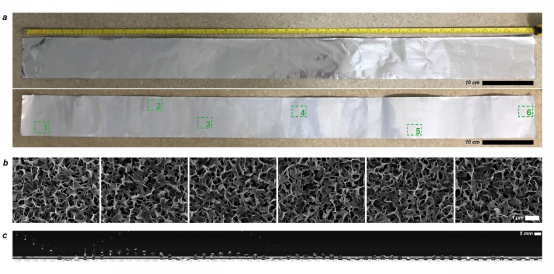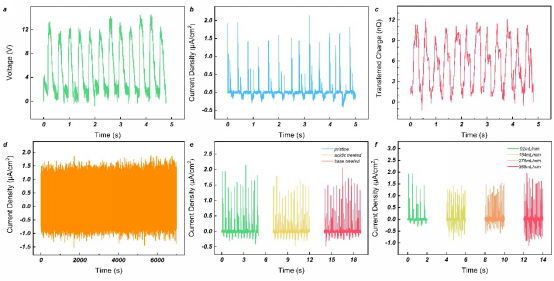Recently, the research result of Professor Cheng Gang’s group "Meter-scale Fabrication of Water-Driven Triboelectric Nanogenerator based on in-situ Grown Layered Double Hydroxides through a Bottom-up Approach" has been published in the internationally renowned publication Nano Energy (IF=15.548, JCR).
Article link: https://doi.org/10.1016/j.nanoen.2020.104646
With the advent of the Internet of Things (IoT) and artificial intelligence (AI) era, sensors and sensing systems will play a more important role and develop towards multi-functionality and intelligence. Since Professor Wang Zhonglin's team invented the triboelectric nanogenerator (TENG), it has realized the study of collecting mechanical energy from the environment and then converting it into electrical energy, which has attracted great attention. TENG has high energy conversion efficiency while collecting low-frequency mechanical energy. However, for sustainability purposes, the durability of TENG based on solid-solid contact needs to be improved because the triboelectric that occurs on the solid-solid interface of TENG is very serious , Which hinders the long-term use of TENG. Recently, some TENGs based on liquid-solid contact mode have appeared. However, these reported strategies have disadvantages such as complicated manufacturing process, high cost, and size limitation.
This work reports a large-size water droplet triboelectric nanogenerator (WD-TENG) with excellent performance, using layered double hydroxides (LDHs) based on in-situ growth as the triboelectric layer, and aluminum as the growth lining The bottom is used as an electrode. Through surface functionalization, an almost "triboelectric-free" surface can be provided to minimize the wear of the triboelectric layer, obtain a longer service life and better water energy collection performance. WD-TENG is constructed using this bottom-up method at low temperatures, and has the advantages of easy operation, low cost and scalability. For the existing WD-TENG production method, this is a promising strategy that can be applied to self-powered sensing systems and contribute to the realization of the blue energy dream.

Figure 1. SEM images of one-meter-long WD-TENG and six different areas prepared, which are randomly selected from six different positions of WD-TENG (marked with green squares). Rebound experiment of water droplets (R0≈3mm) on WD-TENG.

Figure 2. The output performance of WD-TENG: output voltage (a) and current density (b) and transfer charge (c); (d) WD-TENG stability test; (e) acid and alkali resistance stability test; ( f) Self-driving flow meter based on WD-TENG.
Dr. Cui Peng and PhD student Wang Jingjing are the co-first authors of the paper, and Professor Cheng Gang and Professor Du Zuliang are the co-corresponding authors of this paper. This work was supported by funding from the National Natural Science Foundation of China, the Science and Technology Department of Henan Province and Henan University.